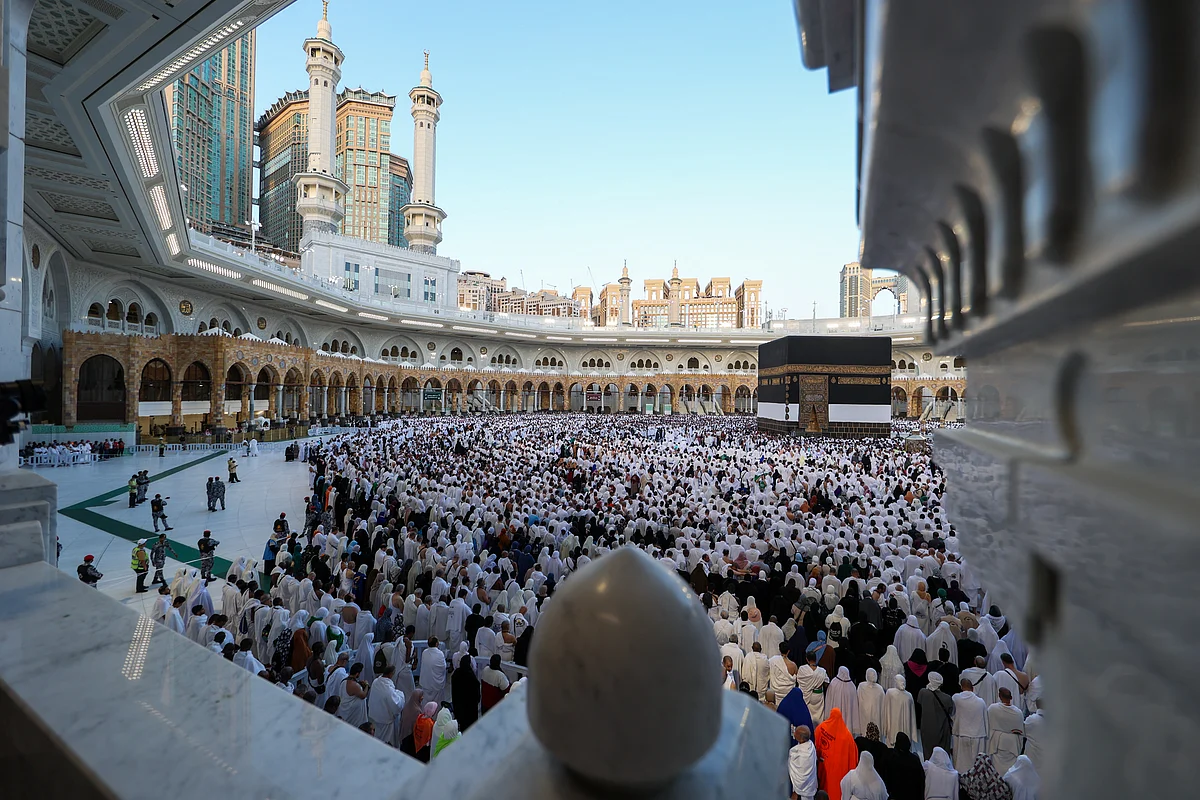Pilgrims perform four key rituals of Hajj, marking peak of sacred journey
From Mina to Mecca, worshippers complete core rites of Hajj with ease and order

Dubai: Hundreds of thousands of pilgrims performed the four main rituals of Hajj on Friday in Mecca and Mina, completing a series of sacred rites in a remarkably orderly and tranquil setting, thanks to what is being described as some of the most advanced organizational plans in the history of the pilgrimage.
The day began with pilgrims departing Muzdalifah at dawn, walking or riding to Mina for the ritual stoning of Jamarat Al Aqba, the symbolic rejection of evil. Under the scorching summer sun, worshippers some pushing elderly relatives in wheelchairs moved through multi-lane roads toward the giant Jamarat Bridge complex, umbrellas in hand to shield themselves from the heat.
Saudi authorities credited a seamless collaboration between security, health, and transportation agencies for the day’s smooth flow. A web of modern crowd management tools, real-time operational models, and a record fleet of 23,000 buses were deployed, enabling precise and safe movement to the stoning ritual site, where up to 300,000 pilgrims can perform the rite each hour.
Civil defense and medical teams were stationed at every entrance and exit, with cooling paths and emergency services providing respite and rapid response.
Meanwhile, the Mashaer Metro Train transported more than 600,000 pilgrims over three days, further easing congestion.
Following the stoning, pilgrims sacrificed animals, marking a partial end to their state of Ihram, a sacred state of devotion and then proceeded to Mecca for the Tawaf Al Ifadah and Sa’i, the rituals of circling the Kaaba and walking between the hills of Safa and Marwah.
Those who completed these rites, or had performed some earlier, exited completely from ihram, many utilizing a new 24-hour haircut service within the Grand Mosque, where each haircut was completed in under two minutes with strict hygiene protocols.
Throughout the Grand Mosque, the General Authority for the Care of the Affairs of the Grand Mosque and the Prophet’s Mosque organised crowd movement and provided multilingual guidance, rigorous cleaning, and 24-hour medical and ambulance services.
The Ministry of Health reported over 125,000 medical interventions across the holy sites so far, including advanced procedures such as cardiac catheterizations and open-heart surgeries performed by Saudi doctors.
This year, technology played a pivotal role. The Ministry of Hajj and Umrah reported more than 5.5 million electronic readings of the Nusuk Card, the digital credential used to streamline pilgrim movement and access, while the Pilgrims Care Center handled over 310,000 inquiries and direct support requests. Compliance teams carried out more than 65,000 inspections to ensure the quality of services provided by Hajj operators.
With the core rites completed, pilgrims now enter the final phase of Hajj, known as the Days of Tashreeq. Over the next two or three days, pilgrims remain in Mina and continue the ritual stoning at each of the three Jamarat pillars Jamarat Al Sughra, Jamarat Al Wusta, and Jamarat Al Aqba throwing seven pebbles at each pillar after midday. Once these rituals are fulfilled, pilgrims may prepare for their journey home, having completed the sacred obligations of Hajj.
Sign up for the Daily Briefing
Get the latest news and updates straight to your inbox
Network Links
GN StoreDownload our app
© Al Nisr Publishing LLC 2026. All rights reserved.